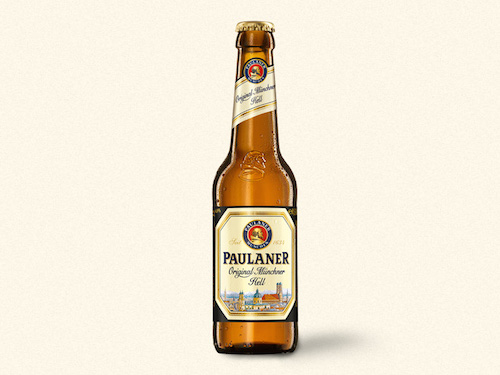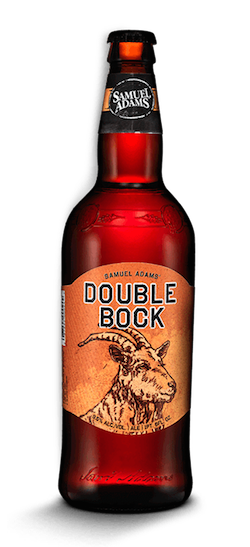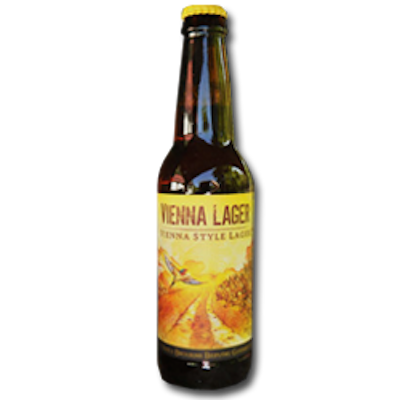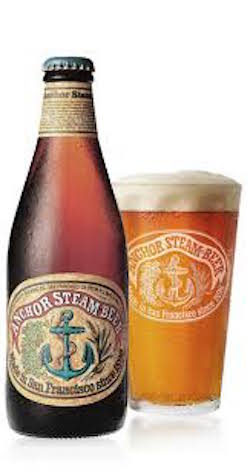When you think lagers or pilsners, you might think of corn-heavy, light beers of Budweiser and Coors, but lagers have had a centuries-long history in Europe.
Traditionally, lagers were fermented in cooler temperatures in cold cellars or caves in the winter. The yeast eventually evolved to prefer the cooler temperatures, leading to slower yeast metabolism and longer fermentation times. Unlike ale yeast (like in pale ales or Belgian Trappist beers), lager yeast does not give off fruity flavors and aromas. This gives the beer a crisp, clean flavor, and in fact, if the lager has any fruity characteristics at all, it comes from the malt. In lagers, the yeast takes a backseat, allowing the water, malt, and hop characteristics to come forward.
Generally, when we think of lagers, we think of the straw-colored pilsner, but lagers come in different colors resulting from the way the malt is prepared. As you read the descriptions below, melanoidins will come up frequently. Melanoidins are the result of several Maillard reactions that occur during the brewing process, whether from malt kilning or high boiling temperatures. If you’ve ever seared a steak or seen the toasted brown tops of a loaf of bread, then you should be familiar with Maillard reactions and melanoidins. Melanoidins should not be confused with caramelization, which is a different type of chemical reaction.
The beers listed below favor Noble hops, Vienna or Munich malt, and have no adjuncts like the corn or rice that you’ll find in Budweiser and other American macrobrews. Hopefully you’ll find the world of craft lagers as interesting and varied as I did.
Munich Lagers
These lagers originated in Munich in Bavaria and take advantage of Munich malt and Noble hops.
Helles
The balance in Helles lagers tends toward the malt, though it should not be overly sweet. Hop character and its ensuing bitterness play a supporting role and should give a low, spicy Noble aroma and flavor. Helles lagers should be light in color, ranging from yellow to pale gold, and medium-bodied.
Beers to try: Paulaner Premium Lager, Spaten Premium Lager
Dunkel
Dunkels are medium-bodied like the Helles but darker in color, ranging from copper to dark brown. They should be moderately sweet but not overwhelming or cloying in the finish. The malt character should remind you of bread crust or toast, and in some dunkels, you may taste hints of chocolate, nut, or caramel from melanoidins. Like the Helles, dunkels are balanced towards the malt.
Beers to try: Lakefront East Side Dark, Ayinger Altbairisch Dunkel
Pilsners
Lagers started in Bavaria, but soon the Czech in the town of Plzen started brewing their own version as well. From there, the Germans gave their own spin.
Both styles are crisp and clean with prominent hop bitterness, though it should never be harsh. German pilsners are drier than their Czech siblings, which make the bitterness linger in the aftertaste. Both are light in color and use Noble varieties of hops. In Czech pilsners, Saaz hops give a spicy or floral aroma and flavor. In German pilsners, Hallertau hops give an herby aroma and flavor.
Beers to try: Pilsner Urquell (quintessential Czech pilsner), Victory Prima Pils, Trumer Pils, Bitburger
Bocks
Bocks take advantage of melanoidins, which give all bocks a rich, malty flavor that is different than say, the English pale ales that get their caramel nuttiness from crystal malts. Bocks are named after the German city they were originally brewed in, Einbeck.
Maibock
Named because of the time of year they are brewed in, maibocks are gold to light amber colored with little to no caramelization. These medium-bodied bocks should have a little bit of spicy or peppery qualities to them from hops and maybe the alcohol. Compared to other bocks, they should be better balanced between hop bitterness and malt (while other bocks are balanced towards malt sweetness), and the finish should be drier.
Beers to try: Victory St. Boisterous, Gordon Biersch Blonde Bock, Ayinger Maibock
Traditional Bock and Doppelbock
Both traditional bocks and doppelbocks should be medium to full-bodied and give some alcohol warmth when drinking, though they should never be astringent or harsh. In color, traditional bocks are light copper to brown, while doppelbocks are darker from deeper gold to dark brown.
Both types of bock lean heavily towards malt sweetness but are never cloyingly sweet in the aftertaste. Traditional bocks are toasty with rich melanoidin malt. Doppelbocks have even more melanoidin richness, and darker versions may have some chocolate characteristics, though it should never taste roasted or burnt like in an English stout. Doppelbocks may also have some fruitiness as well, like prune, plum, or grape, which come from the malt.
Traditional bocks to try: Einbecker Ur-Bock Dunkel, Pennsylvania Brewing St. Nick Bock
Doppelbocks to try: Weihenstephaner Korbinian, Samuel Adams Double Bock, Paulaner Salvator
Amber Lagers
You’ll find amber lagers common during Oktoberfest and autumn. They are medium-bodied and range in color. Vienna lagers are amber to copper colored while Oktoberfest beers (festbiers) are dark gold to deep orange-red in color. Both use lightly toasted malt with low to moderate hop bitterness, and never any caramel or roasted characteristics. Like other lagers and bocks especially, amber lagers have a malty sweetness and a dry finish.
Vienna lagers to try: Gordon Biersch Vienna Lager, Negra Modelo, Devils Backbone Vienna Lager
Festbiers to try: Paulaner Oktoberfest, Hofbräu Oktoberfest, Victory Festbier
Schwarzbier (Black Beer)
Schwarzbiers are the darkest of the lagers, but despite the name, they are never truly black but are dark brown. Although they may look similar to an English stout, they are not as full-bodied and stay in the light to medium body of the other lagers. Malt should be roasty, maybe coffee or chocolate-like, but never burnt. There should be some moderate hop bitterness.
Beers to try: Köstritzer Schwarzbier, Gordon Biersch Schwarzbier, Sprecher Black Bavarian
California Common (Steam Beer)
You might call California commons the black sheep of the lager family. Although these beers still use lager yeast, the beer is fermented at higher temperatures than traditional lagers, which give it a light fruitiness that you wouldn’t find in Continental lagers. These beers are amber or copper colored and medium-bodied. They should be dry and crisp like Continental lagers but with a woody, rustic hop character.
Despite the name, California commons are brewed up and down the west coast of the United States, particularly in the Northwest. Originally called steam beers, the style’s name changed because Anchor Brewing, the originator of the style, trademarked the name.
Beers to try: Anchor Steam, Southampton Steem Beer, Flying Dog Old Scratch Amber Lager